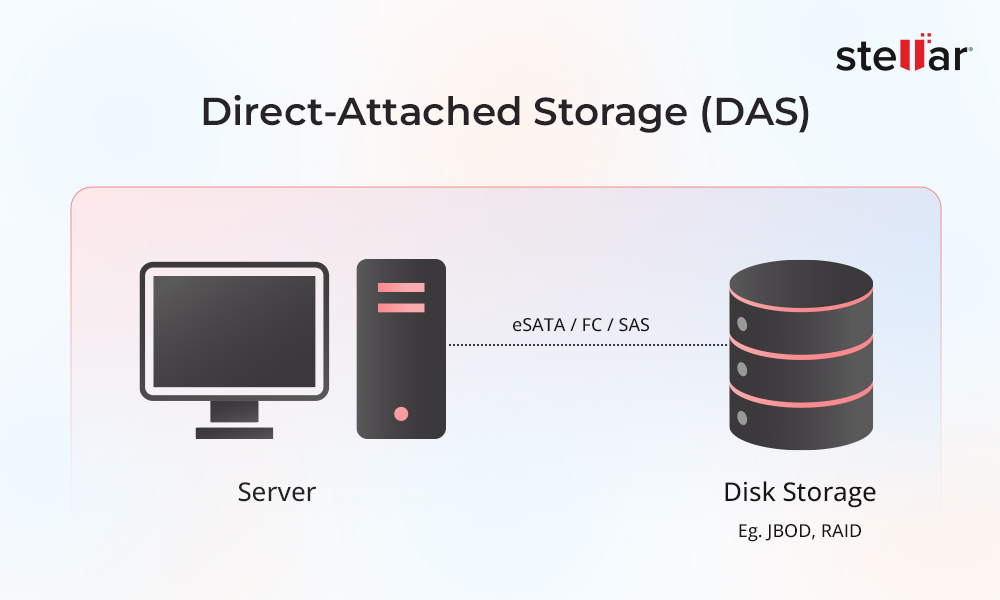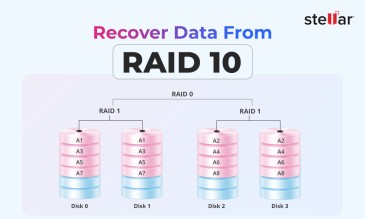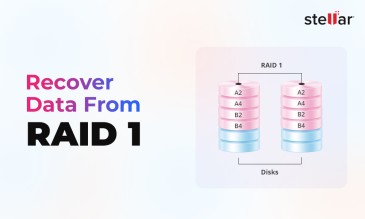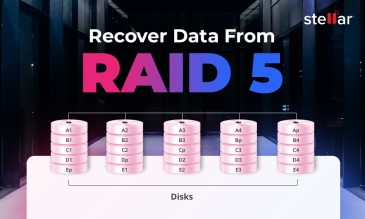What is DAS?
Direct attached storage, or DAS, is a digital storage architecture where the storage media is directly attached to the server or computer accessing it. This arrangement is very different from an architecture where storage is accessed over
a computer network, such as in network-attached storage (NAS) or storage area network (SAN).
The term "DAS" is actually a retronym, which means that it was introduced to differentiate the idea of direct attached storage from network-based storage architectures.
So, it is clear that in a DAS setup, the storage devices are directly connected to the host system, which is typically a server or a workstation, without having to traverse a network. Thus, in DAS, storage and host have a one-to-one
physical relationship.

The direct attached storage model encompasses a range of storage devices. These are hard disk drives, solid-state drives, optical media such as CDs, DVDs, Blu-ray drives, and tape libraries.
The key point to note about DAS is that it operates at the block level. This means that applications interact with the storage through the host operating system and access raw storage blocks rather than files over a network. To enable
this, a host bus adapter (HBA) is used without any intermediate networking components such as routers or Ethernet fabrics.
Even though NAS and SAN storage architectures are dominant in enterprise environments, DAS continues to be a practical and powerful option, particularly when users have workloads that require high performance, simplicity, and local storage control.
There are two main categories of DAS physical layouts: internal and external DAS architectures.
Types of DAS Architectures
Internal DAS
- In this architecture, storage devices are installed within the host machine. This is the common architecture in servers, desktops, laptops, and workstations.
- Typically, the storage media is connected to the host through internal serial or parallel buses such as SATA, SAS, or the legacy PATA interface. Internal DAS is a practical option in use cases where high data transfer speed and low latency connectivity over a short distance are required.
- The limitation here is that internal DAS can support only a limited number of drives. This is because most motherboards provide only a handful of ports.
- Furthermore, every internal DAS storage media occupies chassis space. This impacts airflow and complicates the temperature maintenance mechanism, particularly in dense storage environments.
- In internal DAS, whenever maintenance and upgrades have to be done, system downtime becomes unavoidable. This makes this architecture less ideal in setups that need frequent changes or those that have very little tolerance for downtime.
External DAS
- In external DAS architecture, storage media is stationed outside the host system. Typically, the storage media is in an independent enclosure and is connected to the host via a direct data cable.
- Typically, in this architecture, SCSI, SAS, or Fibre Channel are used for high-performance data transfer. There is greater flexibility and scalability in external DAS compared to internal DAS. There are no device limitations due to the lack of constraints on chassis space.
- Even on a single external chassis, multiple drives can be supported with integrated RAID controllers and hot-swappable bays. Physical maintenance and expansion are also simpler compared to internal DAS. New storage can be added, replaced, or upgraded with less disruption to host operations.
Next, we will understand the underlying protocols and interfaces that enable data transfer between host and storage in a DAS environment.
DAS Protocols and Interfaces
- DE/ATA/PATA: This is a legacy parallel interface that was widely used in desktop systems. It was capable of a throughput of up to 133 MB/s with Ultra DMA/133. It supported only two devices per channel and did not offer hot-swapping. It gradually became obsolete after SATA was released in 2003.
- SATA: SATA, or Serial ATA, is very common in consumer and SMB/MSME DAS setups. It is excellent for point-to-point connectivity and supports hot-swapping. The maximum throughput is up to 600 MB/s in SATA 3. Also, SATA is an efficient, low-cost, and widely supported interface.
- SCSI, Parallel SCSI, and SAS: In an enterprise environment, SAS and SCSI are extensively used. Parallel SCSI can support up to 16 devices, delivering up to 320 MB/s speed. SAS is pin-compatible with SATA and offers features such as dual-porting, full-duplex communication, and expanders. It can support up to 65,535 devices at a data processing rate of 2.25 GB/s.
- Fibre Channel: This interface is typically used in SANs. It is also applicable in high-end DAS setups where the workloads are highly latency-sensitive. The latest version (128GFC) has a data rate of 128 Gb/s.
Manufacturer Landscape for DAS
| Manufacturer | Core Products for DAS | Typical Use Case |
| LaCie | External RAID drives, Thunderbolt enclosures | Creative professionals, video editing, macOS users |
| QNAP | USB/Thunderbolt DAS enclosures, RAID expansion units | SMB storage, fast external backup storage |
| OWC | Thunderbolt RAID systems, NVMe kits | Mac-focused setups, media editing, performance workloads |
| Samsung | SATA and NVMe SSDs | High-speed internal DAS, system upgrades |
| Seagate | HDDs, RAID-ready drives, expansion enclosures | General-purpose DAS, desktop/server deployments |
| Toshiba | Enterprise/consumer HDDs and SSDs | Backup systems, workstations |
| Water Panther | Enterprise RAID and HDD storage systems | Bulk storage, data centers, archival storage |
| Western Digital (WD) | HDDs, SSDs, RAID enclosures | Broad usage—from personal storage to enterprise DAS |
Advantages and Use Cases of DAS
Many SMBs and even larger organizations do not need the advanced features of SAN and NAS, and sometimes, they don't have the resources to manage those architectures, which is why DAS continues to be relevant. Here is an overview of the advantages it offers.
- The initial cost of setup for DAS is very low, which is why it continues to be a practical option for many small and medium-sized businesses. There is no need for network storage infrastructure, so the costs related to switches, cables, and in-house storage networking activities are not incurred.
- DAS offers ease of setup and deployment. In most cases, DAS solutions are plug and play. They can be easily managed through the host operating system, so there is no reliance on dedicated storage admins, and the day-to-day management is simple for small IT teams.
- If an organization has local workloads and requires high performance, DAS is very useful because there is no network layer. The data transfers directly between the host and storage device, so latency is low and throughput is high. When a fast interface like SAS or FC is used, these advantages are amplified.
- The maintenance overhead for DAS is very low. There is no need for separate storage management protocols or network layers.
- A DAS server can handle file storage, email services, and business applications for small organizations.
- DAS is widely used for backup and archive purposes because it is a reliable and cost-effective solution for secondary data.
- DAS is useful in media production environments because it offers high-speed access, which is needed to work with large video and image files.
- Remote offices and educational institutions can benefit from DAS due to its simplicity and because it does not need much IT support on-site.
- For servers that run standalone databases or analytics workloads, DAS is a very effective architecture.
Limitations of DAS
- DAS solutions are difficult to scale beyond a certain point. This is because a host can only support a limited number of connected devices.
- To expand DAS capacity, the host might have to be taken offline, which can be catastrophic for businesses.
- DAS does not have built-in multi-host access. This means that only the directly connected server can use the storage.
- If the server goes down, access to DAS is lost.
- The storage resources get bound to individual hosts, which makes it very hard to reallocate unused capacity across systems when the demand shifts.
About The Author

Data Recovery Expert & Content Strategist












